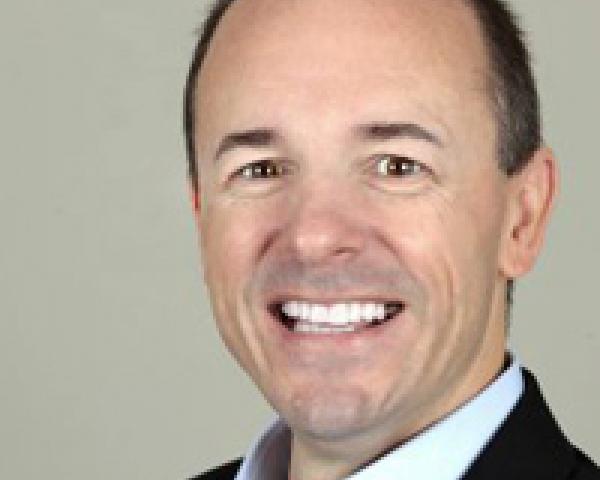Confusion Coming for Workers' Comp
An Uber-style app to summon someone to pick up a pet's poop raises interesting questions for workers' comp. (Call of doody, anyone?)

An Uber-style app to summon someone to pick up a pet's poop raises interesting questions for workers' comp. (Call of doody, anyone?)

Get Involved
Our authors are what set Insurance Thought Leadership apart.
|
Partner with us
We’d love to talk to you about how we can improve your marketing ROI.
|

Bob Wilson is a founding partner, president and CEO of WorkersCompensation.com, based in Sarasota, Fla. He has presented at seminars and conferences on a variety of topics, related to both technology within the workers' compensation industry and bettering the workers' comp system through improved employee/employer relations and claims management techniques.
These four startups are about to turn the insurance world upside down. And, if you ask us, it’s about time.

“This open approach enables the owner of the car to become the owner of his or her data. Novel? Yes, but we believe this is simply the logical evolution of car ownership. As software continues to eat the world, startups like Mojio are poised to take a big bite out of the connected car market.”Needless to say, your connected car is about to get a whole lot better. Mojio has been experimenting with their new model oversees with wild success. In an article posted on the Mojio blog, CEO Kyle Hawk said, “Deutsche Telekom and ZTE are turning to partners like Mojio to provide the platform for global, scalable connected car offerings, signaling an exciting time for not only the automotive and mobile industries, but ultimately for end users who’ll soon be able to enjoy a new era of car ownership and driving experiences.” See also: InsurTech: Golden Opportunity to Innovate CoverHound— CoverHound is built for one-stop shoppers. With the wild success of things like Amazon's 1-click ordering, consumers are used to comparing and purchasing things in one place. Why not apply this philosophy to the insurance world? The brilliant minds behind CoverHound are doing just that. With $33.3 million in their series C round seed funding, this San Francisco startup is everything you would imagine. With urban chic offices and a mass of young professionals with immense potential, this start up is poised to rocket to even more success. They’ve already clobbered over similar sites like the now-defunct Leaky, and they’ve just secured a new round of investors. With this, they plan to take on business insurance coverage for small startups. CoverHound board member James D. Robinson III said, “The industry is ripe for change, CoverHound paves the way into the next generation of insurance.” They’re not just relying on a great user experience website; CoverHound allows potential customers to tweet at them for quotes, capitalizing on high traffic social media. With these innovative business practices, CoverHound will be the new way to get insurance as technology continues to push on. Trov— Insurance isn’t just about cars.; what about your house and all your belongings? There is nothing worse than coming home to a ransacked home and discovering that all your valuables have been stolen. Panic sets in. Did I pay my premiums this month? Will my renter’s insurance cover the cost of my bike? Do I even have proof of all my valuables? Trov solves all of these in one glorious mobile app. The brilliant minds behind Trov thought pretty critically about the behaviors of millennials before designing the platform Trov is built on. Insurance companies of the past have two fatal errors. The first is they don’t account for the fact that today’s consumer is far from stagnant and that moving every two years is commonplace. Home insurance policies for 30-plus years just aren’t happening anymore. The second, and perhaps the more frustrating, is claims. Insurance giants intentionally make the claims process difficult to discourage you from filing them. Trov solves it all with its cloud-based insurance app that — with a few swipes, photos and texts — you can catalog, insure and file a claim right from your phone. It’s a dream come true when it comes to insuring your valuables without the hassle. Right now, Trov is only available in Australia, but this Bay Area-based company plans to launch in the U.S. by 2017. Lemonade— For a company that has yet to launch after receiving one of the highest amounts in first-round seed funding, Lemonade is getting a lot of press. Claims like, “We aim to be the Facebook of insurance” are pretty bold, but we would be lying if we said we weren’t intrigued. Lemonade is a peer-to-peer insurance company. To put it simply, a group of small policyholders pay their premiums into a pool to pay claims. If there is still money left in the pool at the end of the period, the group gets money back. The company is backed by notable investors Sequoia and Aleph Capital and has brought on AIG and ACE veterans execs. A simple search of “Lemonade insurance” and you’ll find article after article of its “plans” to launch. As the end of 2016 creeps closer and closer, we can’t help but wonder what’s going on behind the hot pink doors. With a concept that’s yet to be tested in the American market, Lemonade has potential — but, then again, good press doesn’t last forever. See also: The Start-Ups That Are Innovating in Life Fast forward to 2017, and this list could be entirely different. That’s the beauty of startups: they’re constantly pushing boundaries. All of it is good news for the customer, who desires a better experience when it comes to their insurance policies. Giants such as State Farm and Progressive will have to rely on more than just clever marketing spokespeople to keep up with the tech trends. These four startups are already causing some mayhem of their own in the industry. With a piece of a $1 trillion pie at stake, it’s surprising it has taken this long for the shakeup. This article first appeared on obrella.com.
Get Involved
Our authors are what set Insurance Thought Leadership apart.
|
Partner with us
We’d love to talk to you about how we can improve your marketing ROI.
|

Gabrielle Lupton is a technology and business writer who has been working in the property and casualty insurance sphere for most of her career. Gabrielle covers topics like cutting-edge technology and the most recent trends in the industry. She currently manages The Insider blog for Obrella.com.
Some may think the majority of patients just want their symptom or disease treated. News flash — you're wrong.

 Most everyone knows our healthcare is in crisis. The solution appears clear: improve care quality, reduce cost, increase safety, grow healthier communities and deliver all this with greater consumer affordability. The advent of healthcare technology will certainly help make much of this possible.
But we must not make the mistake of thinking patients will have the same level of dedication to population health, wearables and medication adherence as we do. Patients care about themselves and those they love. They care about money and their financial future. They care about feeling good and avoiding pain — but the pain can be more than just their symptoms and condition.
Health payers acquired a longstanding, terrible reputation for not caring. Many plan members, who suffer physically, emotionally and financially, felt as though they were treated like just another accounting line item, as if they were just commodities that made the business of healthcare payments go 'round.
We're at a tipping point. As more risk shifts onto the shoulders of hospitals, providers and affordable care organizations (ACOs), we must not make the same mistakes. Tomorrow's healthcare will involve and require patient compliance and participation to get the best results.
It is one thing to put technology in place that captures patient-generated health data, but it is quite another to show patients you care about the data. Patients deserve to feel the compassion, caring and humanity in our hearts and actions.
See also: Innovation: a Need for ‘Patient Urgency’
I've retired from practice, my career now shifting into the business side of healthcare. I am carefully seeking my next path for the right healthcare company, where I can blend my experience, talents, skills and years of front-line patient experience. The healthcare sector is a target-rich environment, whose underlying industries, more than ever, have a tremendous ability to shape the course and outcomes of human lives.
Technology, big data and Triple Aim aside, we must remember the human condition is more than just condition. It is a place where people reside because they often have lost hope and human support.
In the future of patient data, we must recognize that behind the numbers lives a human life and heart and the potential for physical and emotional improvement.
Most everyone knows our healthcare is in crisis. The solution appears clear: improve care quality, reduce cost, increase safety, grow healthier communities and deliver all this with greater consumer affordability. The advent of healthcare technology will certainly help make much of this possible.
But we must not make the mistake of thinking patients will have the same level of dedication to population health, wearables and medication adherence as we do. Patients care about themselves and those they love. They care about money and their financial future. They care about feeling good and avoiding pain — but the pain can be more than just their symptoms and condition.
Health payers acquired a longstanding, terrible reputation for not caring. Many plan members, who suffer physically, emotionally and financially, felt as though they were treated like just another accounting line item, as if they were just commodities that made the business of healthcare payments go 'round.
We're at a tipping point. As more risk shifts onto the shoulders of hospitals, providers and affordable care organizations (ACOs), we must not make the same mistakes. Tomorrow's healthcare will involve and require patient compliance and participation to get the best results.
It is one thing to put technology in place that captures patient-generated health data, but it is quite another to show patients you care about the data. Patients deserve to feel the compassion, caring and humanity in our hearts and actions.
See also: Innovation: a Need for ‘Patient Urgency’
I've retired from practice, my career now shifting into the business side of healthcare. I am carefully seeking my next path for the right healthcare company, where I can blend my experience, talents, skills and years of front-line patient experience. The healthcare sector is a target-rich environment, whose underlying industries, more than ever, have a tremendous ability to shape the course and outcomes of human lives.
Technology, big data and Triple Aim aside, we must remember the human condition is more than just condition. It is a place where people reside because they often have lost hope and human support.
In the future of patient data, we must recognize that behind the numbers lives a human life and heart and the potential for physical and emotional improvement.
Get Involved
Our authors are what set Insurance Thought Leadership apart.
|
Partner with us
We’d love to talk to you about how we can improve your marketing ROI.
|

Steve Ambrose is a strategy and business development maverick, with a 20-plus-year career across several healthcare and technology industries. A well-connected team leader and polymath, his interests are in healthcare IT, population health, patient engagement, artificial intelligence, predictive analytics, claims and chronic disease.
Here is how to stop the worldwide governmental trend to weaken encryption, exemplified in the fight between Apple and the U.S.

Get Involved
Our authors are what set Insurance Thought Leadership apart.
|
Partner with us
We’d love to talk to you about how we can improve your marketing ROI.
|

Jesse Lyon works in financial fields that involve retail banking, residential property valuation and professional insurance. He is deeply interested in the fields of cyber liability and technology E&O, and his research has led to four published papers on those topics in the U.S. and the U.K.
But even the most innovative start-ups will need the help and support of traditional carriers and brokers.

Get Involved
Our authors are what set Insurance Thought Leadership apart.
|
Partner with us
We’d love to talk to you about how we can improve your marketing ROI.
|

Rashmi Melgiri is CEO and founder of Functional Finance.
She was previously COO and co-founder of CoverWallet. She was also a strategy consultant at the largest North American TMT (technology, media and telecom) consulting group, Altman & Vilandrie.
Society may debate whether "defensive medicine" exists -- but every doctor would tell you he practices it.

Get Involved
Our authors are what set Insurance Thought Leadership apart.
|
Partner with us
We’d love to talk to you about how we can improve your marketing ROI.
|

Erik Leander is the CIO and CTO at Cunningham Group, with nearly 10 years of experience in the medical liability insurance industry. Since joining Cunningham Group, he has spearheaded new marketing and branding initiatives and been responsible for large-scale projects that have improved customer service and facilitated company growth.

Richard E. Anderson is chairman and chief executive officer of The Doctors Company, the nation’s largest physician-owned medical malpractice insurer. Anderson was a clinical professor of medicine at the University of California, San Diego, and is past chairman of the Department of Medicine at Scripps Memorial Hospital, where he served as senior oncologist for 18 years.
The technology that’s available for hacktivism is easier and cheaper than ever, lowering the barrier of entry even for those with little experience.

Get Involved
Our authors are what set Insurance Thought Leadership apart.
|
Partner with us
We’d love to talk to you about how we can improve your marketing ROI.
|

Byron Acohido is a business journalist who has been writing about cybersecurity and privacy since 2004, and currently blogs at LastWatchdog.com.
Don’t expect the marketplace to adapt to your style and values and needs — you must meet theirs.

Get Involved
Our authors are what set Insurance Thought Leadership apart.
|
Partner with us
We’d love to talk to you about how we can improve your marketing ROI.
|

Mike Manes was branded by Jack Burke as a “Cajun Philosopher.” He self-defines as a storyteller – “a guy with some brain tissue and much more scar tissue.” His organizational and life mantra is Carpe Mañana.
Risk management began as science, became an art and is now a mess, the author argues.

Get Involved
Our authors are what set Insurance Thought Leadership apart.
|
Partner with us
We’d love to talk to you about how we can improve your marketing ROI.
|

Alex Sidorenko has more than 13 years of strategic, innovation, risk and performance management experience across Australia, Russia, Poland and Kazakhstan. In 2014, he was named the risk manager of the year by the Russian Risk Management Association.
Only half of pharmaceutical companies see consumerism as an opportunity. But that's EXACTLY where the growth lies.

 More surprising is that only half of both large and small pharmaceutical companies see the growth of consumerism in healthcare as an opportunity. But that's EXACTLY where the opportunity for growth lies. To thrive in the new era of value-based care, pharma companies will need to change their marketing strategy toward partnering and will certainly need to focus far more on the individual consumer.
See also: Checklist for Improving Consumer Experience
Trying to scare politicians away from lower-price reforms with the “It will kill our R&D” excuse is becoming the “BOO!” that no longer scares the grown-ups. Both 2016 presidential candidates, Hillary Clinton and Donald Trump, plan to stimulate price competition through imports — and there is bipartisan pressure to lift the ban on Medicare's negotiating drug prices. Apart from trade groups and shareholders, high-priced pharma doesn't have many friends.
Payer pressure is bad enough, but if you don't get into the value-based care game, you are going to be on the wrong side of a very emotional equation.
Patients have greater financial burdens because of higher deductibles and greater cost-sharing requirements, with varying medication tiers. Providers are ever-burdened with less time, and, now, a greater level of risk is being put on them to deliver higher-quality care, better outcomes and greater patient satisfaction — all at a lower price.
Patients are not just seeking advice from providers. They are increasingly online, and at all hours. Plus, we're going to start to see greater levels of patient-generated healthcare data with wearables and digital technology. And, as we have seen, half of consumers spend their online time on social media. (HINT: Tap into consumers' behaviors and beliefs, show that you genuinely care and engage them in ways that let them feel as though you are part of their health team.)
The writing is on the wall. Consumers are practically screaming out what they want and need from you. Partner with wearable and EHR companies. Start developing ways to capture and interact with your customers — specific to individuals, at the best times to engage. Find ways you can partner with hospitals, physicians and affordable care organizations (ACOs) to get into their care pathway in ways that help them lower costs to patients and payers.
See also: Stop Overpaying for Pharmaceuticals
Say “yes” to predictive modeling, big data, analytics, lots of testing and customer segmentation. “Yes” to retaining some of the traditional marketing. Most of all, become human in your approach. Put yourself out there and let people know that you are no longer on an island, separate from everyone else. Let them know your port and beaches are open to more boats and more people than ever before.
More surprising is that only half of both large and small pharmaceutical companies see the growth of consumerism in healthcare as an opportunity. But that's EXACTLY where the opportunity for growth lies. To thrive in the new era of value-based care, pharma companies will need to change their marketing strategy toward partnering and will certainly need to focus far more on the individual consumer.
See also: Checklist for Improving Consumer Experience
Trying to scare politicians away from lower-price reforms with the “It will kill our R&D” excuse is becoming the “BOO!” that no longer scares the grown-ups. Both 2016 presidential candidates, Hillary Clinton and Donald Trump, plan to stimulate price competition through imports — and there is bipartisan pressure to lift the ban on Medicare's negotiating drug prices. Apart from trade groups and shareholders, high-priced pharma doesn't have many friends.
Payer pressure is bad enough, but if you don't get into the value-based care game, you are going to be on the wrong side of a very emotional equation.
Patients have greater financial burdens because of higher deductibles and greater cost-sharing requirements, with varying medication tiers. Providers are ever-burdened with less time, and, now, a greater level of risk is being put on them to deliver higher-quality care, better outcomes and greater patient satisfaction — all at a lower price.
Patients are not just seeking advice from providers. They are increasingly online, and at all hours. Plus, we're going to start to see greater levels of patient-generated healthcare data with wearables and digital technology. And, as we have seen, half of consumers spend their online time on social media. (HINT: Tap into consumers' behaviors and beliefs, show that you genuinely care and engage them in ways that let them feel as though you are part of their health team.)
The writing is on the wall. Consumers are practically screaming out what they want and need from you. Partner with wearable and EHR companies. Start developing ways to capture and interact with your customers — specific to individuals, at the best times to engage. Find ways you can partner with hospitals, physicians and affordable care organizations (ACOs) to get into their care pathway in ways that help them lower costs to patients and payers.
See also: Stop Overpaying for Pharmaceuticals
Say “yes” to predictive modeling, big data, analytics, lots of testing and customer segmentation. “Yes” to retaining some of the traditional marketing. Most of all, become human in your approach. Put yourself out there and let people know that you are no longer on an island, separate from everyone else. Let them know your port and beaches are open to more boats and more people than ever before.
Get Involved
Our authors are what set Insurance Thought Leadership apart.
|
Partner with us
We’d love to talk to you about how we can improve your marketing ROI.
|

Steve Ambrose is a strategy and business development maverick, with a 20-plus-year career across several healthcare and technology industries. A well-connected team leader and polymath, his interests are in healthcare IT, population health, patient engagement, artificial intelligence, predictive analytics, claims and chronic disease.